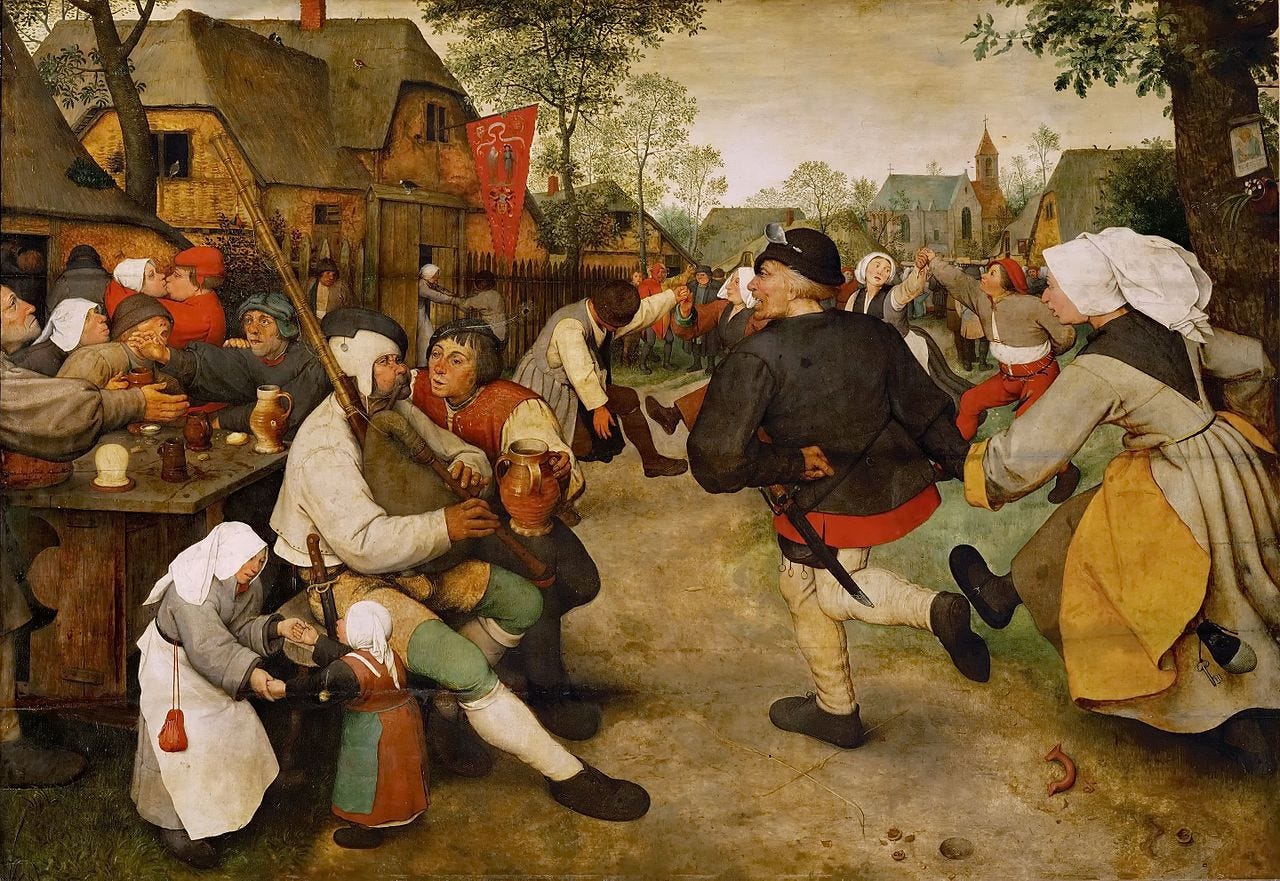The Celtics are unequivocally great and worthy. Conference imbalance is still a problem
The West has been clearly better than the East overall for 25 years ago. Something has to give.
Good morning. Let’s basketball.
Peasant Dance; Pieter Bruegel the Elder; 1568
Without besmirching the accomplishment of the Boston Celtics, who were without question the best team in the NBA through the regular season and the playoffs, it is near universally considered that the Western Conference remains deeper and more replete with high-quality teams. This has been the case for most of the past 25 years, essentially since Jordan’s second retirement in 1998.
It’s a real problem, and the fact that the Celtics ruled the NBA this season is almost beside the point.
Why is it a problem?
Teams play teams from the opposite conference 30 times during the regular season, not counting the in-season tournament title game. That leaves the other 52 games to come against in-conference opponents. That’s just about two-thirds of the regular season coming against your own conference. If you’re in the “tough” conference, that means a much tougher schedule than if you’re in the “soft” conference.
Then you have the playoffs: a maximum of three rounds in-conference, and one round out-of-conference. Obviously, if you are in a tougher conference, the quest is much more difficult.
Just look at the opponent winning percentage by round to get to the Finals for each 2023-24 combatant. The Celtics beat East teams with these win percentages: .561, .585, .573. The Mavericks, who were in fairness a lower seed, beat teams with these win percentages: .622, .695, .683. And Dallas didn’t even have to face the defending champs from their own conference.
Let’s look at it another way. Imagine both the No. 1 seeds from each conference made the Finals and the higher seed won every round. (The No. 4 seed beats the No. 5 seed, the No. 2 seed beats the No. 3 seed, etc.) Here’s what the round-by-round win percentages would be for this season.
East: .561 (8 seed), .585 (4 seed), .610 (2 seed)
West: .598 (8 seed), .622 (4 seed), .695 (2 seed)
At every stage, the West No. 1 seed faces stronger opposition on paper.
And this underrates the challenge in the West precisely because of the regular season difficulty differences. The NBA had six teams with 25 wins or less this season. Four of them were in the East. The NBA had 11 teams under .500 this season. Seven of them were in the East. Good East teams fatten up on a softer schedule, inflating their win percentage vs. having a balanced schedule. So, based on that, a West team with a .600 win percentage is likely stronger than an East team with a .600 win percentage based on the competition faced to get those victories.
This isn’t about the Celtics or their path to the title. It was earned. Every title is earned, but Boston was especially good by any standard. They are and should be favorites to repeat.
This is about a problem that has existed in the NBA for 25 years, that the league has had zero urgency to resolve. Eliminating conference barriers in the playoffs and seeding the teams 1-16 is a lost cause due to travel and timing concerns.
The next stage of debate here is more regionalization.
Keep reading with a 7-day free trial
Subscribe to Good Morning It's Basketball to keep reading this post and get 7 days of free access to the full post archives.



